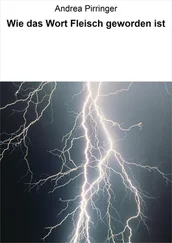Source : IEEE 1584 Guide [9]. © 2002 IEEE.
| System Voltage, kV |
Equipment Type |
Typical Gap between Conductors |
Distance × Factor |
| 0.208–1 |
Open air |
10–40 |
2.000 |
|
Switchgear |
32 |
1.473 |
|
MCC and panels |
25 |
1.641 |
|
Cable |
13 |
2.000 |
| >1–5 |
Open air |
102 |
2.000 |
|
Switchgear |
13–102 |
0.973 |
|
Cable |
13 |
2.000 |
| >5–15 |
Open air |
153 |
2.000 |
|
Switchgear |
13–153 |
0.973 |
|
Cable |
13 |
2.000 |
For the arc flash protection boundary, defined further, the empirically derived equation is:
(1.15) 
where E Bis the incident energy in J/cm 2at the distance of arc flash protection boundary.
For Lee’s method:
(1.16) 
Due to complexity of IEEE equations, the arc flash analysis is conducted on digital computers. It is obvious that the incident energy release and the consequent hazard depend upon:
The available three-phase rms symmetrical short-circuit currents in the system. The actual bolted three-phase symmetrical fault current should be available at the point where the arc flash hazard is to be calculated. In low voltage systems, the arc flash current will be 50–60% of the bolted three-phase current, due to arc voltage drop. In medium and high voltage systems, it will be only slightly lower than the bolted three-phase current. The short-circuit currents are accompanied by a DC component, whether it is the short circuit of a generator, a motor, or a utility source. However, for arc flash hazard calculations, the DC component is ignored. Also, any unsymmetrical fault currents, such as line-to-ground fault currents, need not be calculated. As evident from the cited equations, only three-phase symmetrical bolted fault current need be calculated.
The time duration for which the event lasts. This is obviously the sum of protective-relay (or any other protection device) operating time plus the opening time of the switching device. For example, if the relay operating time is 20 cycles, and the interrupting time of the circuit breaker is 5 cycles, then the arc flash time or arcing time is 25 cycles.
The type of equipment, that is, switchgear or MCC, or panel and the operating voltage
The system grounding. This is deleted in 2018 edition, see Chapter 3
We can add to this list:
1 Electrical electrodes and potential arc lengths; spacing between phases, spacing between phases and ground, orientation-vertical or horizontal, insulated versus non-insulated buses.
2 Atmospheric conditions like ambient temperature, barometric pressure, and humidity.
3 Dissipation of energy in the form of heat, light, sound, and pressure waves.
4 Arc conditions like, randomness of arc, its interruption, arc plasma characteristics, size, and shape of enclosure.
For using the IEEE equations, the factors listed above need not be considered. As an example, there are many discussions about the gap distances specified in IEEE 1584 Guide and their effects on the incident energy release. While critique of IEEE equations and methodology does add to the technical aspects and paves the way for further revisions, this book limits the calculations according to current IEEE methodology. See also Chapter 3.
IEEE Standard 1584 Guide also provided equations for class L and RK1 fuses, not reproduced here.
1.9 PERSONAL PROTECTIVE EQUIPMENT
NFPA table 130.7(C)(16) describes the PPE characteristics for hazard risk category of 0, and 1 through 4. These are shown in Table 1.8.
The standard ASTM F1506 [35] calls for every flame-resistant garment to be labeled with an arc energy rating, ATPV (arc thermal performance exposure value). The rating of the garment is matched with the calculated incident energy release level. The test method of determining the ATPV specifies the incident energy on a multilayer system of materials that results in a 50% probability that sufficient heat transfer through the test specimen is predicted to cause onset of second-degree skin burn injury (see Reference [9]). Arc rating is reported as the minimum of ATPV or E BT(breakopen threshold). E BTis defined in ASTM F1959-06.
The maximum incident energy for which PPE is specified is 40 cal/cm 2(167.36 J/cm 2). It is not unusual to encounter energy levels much higher than 40 cal/cm 2 in actual electrical systems. Standards do not provide guidelines for higher incident energy levels . Incident energy reduction techniques can be applied; otherwise, it is prudent not to maintain such equipment in energized state.
TABLE 1.8.Protective Clothing Characteristics
Source : NFPA 70E [17]. (All details in the NFPA table have not been reproduced.)
| Hazard Category |
Clothing Description |
Range of Calculated Incident Energy |
Arc Rating o PPE, cal/cm 2 |
| 0 |
Nonmelting, flammable materials, that is, untreated cotton, wool, rayon, or silk, or blends of these materials, with a fabric weight of 4.5 oz/yd 2 |
0 ≤ E ≤ 1.2 |
N/A |
| 1 |
Arc-rated clothing, minimum arc rating of 4 cal/cm 2 |
1.2 < E ≤ 4 |
4 |
| 2 |
Arc-rated clothing, minimum arc rating of 8 cal/cm 2 |
4 < E ≤ 8 |
8 |
| 3 |
Arc-rated clothing selected so that the system rating meets the required minimum arc rating of 25 cal/cm 2 |
8 < E ≤ 25 |
25 |
| 4 |
Arc-rated clothing selected so that the system rating meets the required minimum arc rating of 40 cal/cm 2 |
25 < E ≤ 40 |
40 |
A category 4 PPE outfit looks like a space suit with face hood, eye shields, cover, and gloves. It restricts the mobility of a worker to perform delicate tasks, for example, maintenance work on terminals and wiring.
Thus, not only an accurate calculation of incident energy level, but its reduction in the planning and design stage and selection of appropriate protection and relaying of electrical systems are gaining importance [36].
A very significant change in NFPA70E 2012 from 2009 is the redefinition of PPE hazard risk categories. This will be based on developing a clothing system meeting a specific tested cal/cm 2level and comprised of arc-rated materials. Suppose that an 8 cal/ cm 2protection is required; this can be achieved by:
8-cal/cm2 arc-rated pants and shirts
4-cal/cm2 treated pants and shirts and 4 cal/cm2 arc-rated overall
8-cal/cm2 arc-rated overall cotton shirts and pants.
It is the total level of arc-rated protection that matters. To achieve 8 cal/cm 2of the example being discussed, any 8 cal/cm 2system of one layer or more is acceptable. Natural fiber clothing like cotton, wool, and silk are still allowed but cannot add to the protection level because of risk of ignition. A note of caution is required in interpretation: a 4 cal/cm 2arc-rated shirt and another 4 cal/cm 2arc-rated shirt put together do not add to 8 cal/cm 2. When layers are used, the total system must be tested to get the total arc rating, though most often the testing may prove that even greater protection may be provided than the arithmetic sum of the two layers . Also, layering of clothing that is not arc-rated cannot be used to increase arc rating of the clothing. See appendix H of NFPA 70E.
Читать дальше














